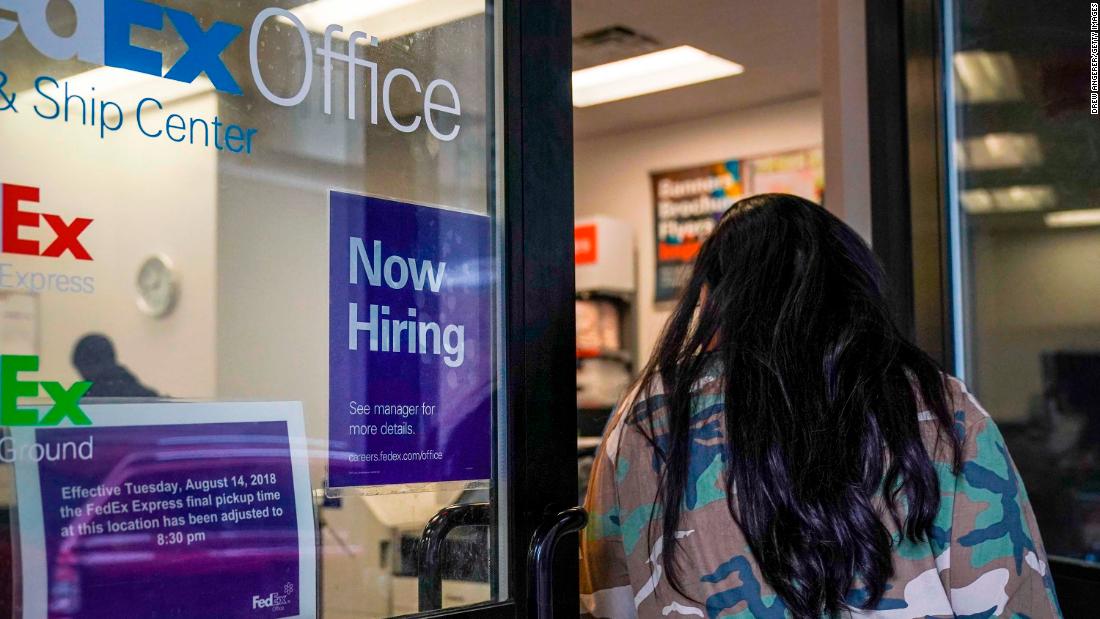
That was the fewest jobs gained in a month since September 2017.
The unemployment rate fell to 3.8%, as fewer unemployed people were looking for work. The Labor Department suggested that furloughed workers returning to work after the government shutdown also contributed to the lower unemployment rate.
Economists surveyed by Refinitiv had expected the economy to add 180,000 jobs, saying that the underlying pace of job growth was strong. So this was a big miss. The past two months were revised only slightly.
The numbers may be a sign that after 101 consecutive months of job growth, the economy is running out of available workers. There have been fewer unemployed people than open jobs since June 2018.
It may also be more troubling evidence of a slowdown, which has been showing up in other economic data. Employers have been rocked in recent months by a volatile stock market, uncertain political environment and weakness overseas.
However, it could also be a snowstorm-related fluke.
"This is pretty much a weather story," said Scott Brown, chief economist with the investment banking firm Raymond James. The Labor Department noted that 390,000 people reported they couldn't get to work because of weather, after a relatively mild January. "I wouldn't worry about the payroll figure at all. I don't think it tells us much."
In general, it's never a good idea to read too far into one month of payroll data. The last three months have still averaged 186,000 jobs, well above the number needed to absorb people entering the labor force.
The construction industry lost 31,000 jobs in February, likely due to bad weather. Leisure and hospitality employers added no jobs, after increasing their payrolls by 410,000 over the past year. Manufacturing turned in an anemic month after a year of strong gains. Business and professional services was the one significant category that added jobs.
The brightest spot in February's report was wage growth. Average hourly earnings have been consistently stronger for the last several months, and posted the largest year-over-year percentage gain since 2009, at 3.4%. Some economists worry whether that pace can be sustained.
"The problem is it may be too little, too late. We're now looking for a recession lurking around the corner," said Lindsey Piegza, chief economist at the brokerage Stifel. Also, she said wage gains are concentrated in a few in-demand professions like information technology and accounting. "We're seeing pockets of wage pressure as opposed to broad-based wage gains."
The number of people working part time for economic reasons plunged by 837,000. That could mean employers brought people on full-time because of the difficulty of finding new employees, although the average workweek declined slightly and many federal workers returned from furlough after the government shutdown.
Analysts speculated that despite strong wage gains, the unexpectedly weak report will reinforce the Federal Reserve's decision to hold off on further rate hikes at its meeting in two weeks.
CNN Business' Matt Egan contributed to this report.
No comments:
Post a Comment